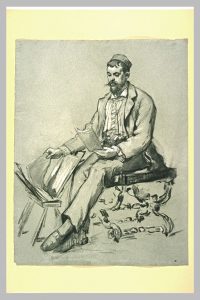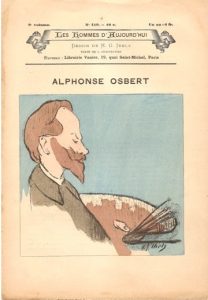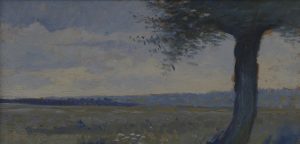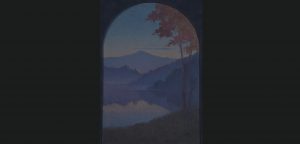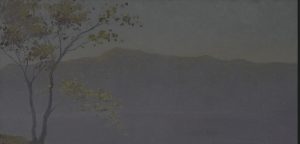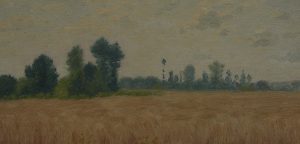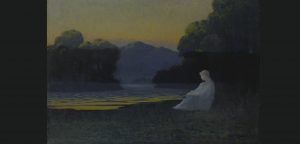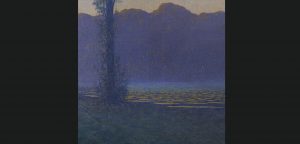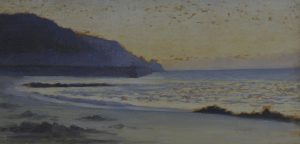The artist was born on March 23 into a bourgeois family in Paris. Painted at the School of Fine Arts in the workshop of Henri Lehmann. Alphonse was friends with his classmates Seurat and Aman-Jean, the artists, who later became famous.
1857 - 1939
Alphonse Osbert
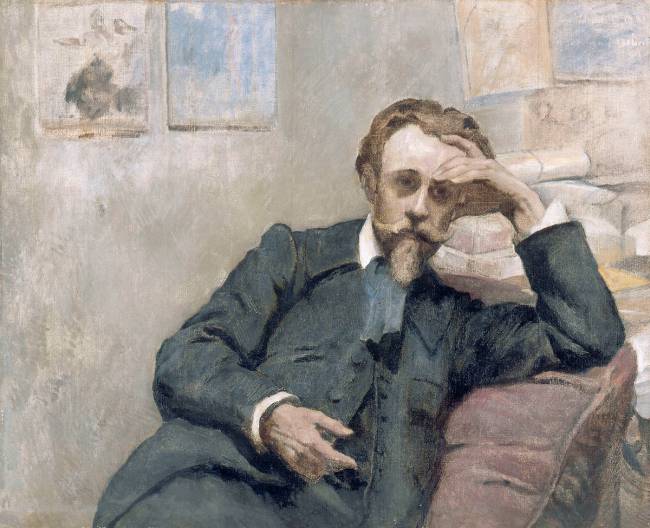
description
A French artist, master of monumental painting, a vivid representative of Symbolism.
Alphonse Osbert was a member of the mystical Rosicrucian community, which was organized by Josephine Peladan in Paris, and constantly exhibited his works at the Symbolist Salon de la Rose + Croix. The artist was successful during his lifetime: he sold his canvases throughout France and abroad, repeatedly received large orders from the state for the design of public buildings. He was the creator of large-scale murals in the lobby of the French Vichy resort and the House of Bourg-la-Reine. In the early twentieth century, Alphonse Osbert was one of the most influential Symbolists of France.
Key ideas:
– The artistic style of Alphonse Osbert is purely symbolism. In his paintings, we can find all the features inherent in this style: mythological images with perfect figures and faces, mysterious landscapes fanned by haze and permeated with a lyrical mood.
– Osbert’s canvases take the viewers away from everyday fuss and immerse them in a special world where beautiful muses and mysterious nymphs live, where the moonlight or the light of the setting sun illuminate idyllic landscapes filled with serenity and grandeur. In each painting, there is a slight longing for the lost beautiful past and admiration for eternal beauty.
– The artist uses a rich color palette. Most canvases have a lot of rich dark blue and light blue colors that envelop the figures in the foreground, giving them a certain mystery. Usually the action takes place against a bright yellow or reddish sunset, which Osbert depicted masterfully, truthfully conveying the atmosphere of late twilight. The characters of the artist’s paintings are in complete harmony with nature and the outside world.
– Paintings by Osbert are distinguished by their monumentality and scope. The clearly delineated strict figures and serene landscapes seem to be specially created to decorate a temple or a library. Perhaps that is why the artist always had numerous orders for murals and paintings of various buildings. The most ambitious and successful project was the painting of the premises of the thermal resort of Vichy, where Alphonse Osbert managed to fully reveal his extraordinary talent.
1857
1882
1884
1887
1889
1892
1902
1911 - 1913
1939
The birth of the artist
He became a follower of Georges Seurat and worked in the style of pointillism
He became a follower of Georges Seurat and worked in the style of pointillism, experimenting with color in his works. During this period, the artist’s paintings became brighter, while his color palette became richer.
Took part in the first exhibition of the Salon of Independent in Paris
Took part in the first exhibition of the Salon of Independent in Paris.
Symbolism
Saw the works of Maurice Denis, Odilon Redon and Puvis de Chavannes, after which he began to paint in the style of symbolism.
Took a trip to Spain
Took a trip to Spain, where he worked a lot on color and light in his compositions. After this journey, the work of Osbert finally directed towards symbolism.
Participated in the first Rosicrucian Salon
Participated in the first Rosicrucian Salon, where the works of the Symbolists of France and Belgium were widely represented. The artist became a regular participant in the exhibition “Roses and the Cross” together with his friend Alexander Seon.
Received a large order from the government
Received a large order from the government. Until 1904, the artist designed the lobby of the Vichy resort and several other rooms. Most of the frescoes are perfectly preserved, and have been adorning the building to this day.
Worked on the frescoes in the town hall of Bourg-la-Reine
Worked on the frescoes in the town hall of Bourg-la-Reine. In the later period, almost did not create easel paintings.
The death
Alphonus Osbert died in Paris in 1939 in his art workshop.

